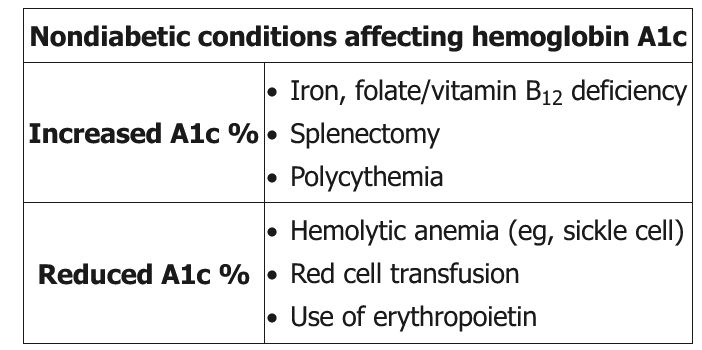A1C affected by
- related: Endocrine
- tags: #note

Hemoglobin A1c (HbA1c) is a widely used laboratory assay for glycated hemoglobin and is reported as a percentage of glycated hemoglobin in the sample. The rate of glycation is proportional to the ambient glucose concentration. Because hemoglobin levels are usually stable, HbA1c can be used as a marker for glycemic control in patients with diabetes mellitus and reflects mean plasma glucose over 8-12 weeks.
However, HbA1c is vulnerable to changes in hemoglobin production and survival. Patients with conditions that cause reduced red blood cell survival (eg, hemolytic anemia) have a greater proportion of new red blood cells (ie, with nonglycated hemoglobin) and therefore a misleadingly low HbA1c. Conversely, those with reduced blood red cell production (eg, due to iron deficiency, as in this patient) have a lower proportion of new red cells and a misleadingly high HbA1c.
- increased destruction: low A1C because newer RBC with less glycated Hgb
- reduced production: higher A1C because of less new cells
In such cases, the underlying hematologic condition should be corrected and the HbA1c rechecked. Alternately, serum fructosamine, which measures glycation of serum proteins, can be ordered; this test estimates glycemic control over 2-3 weeks.